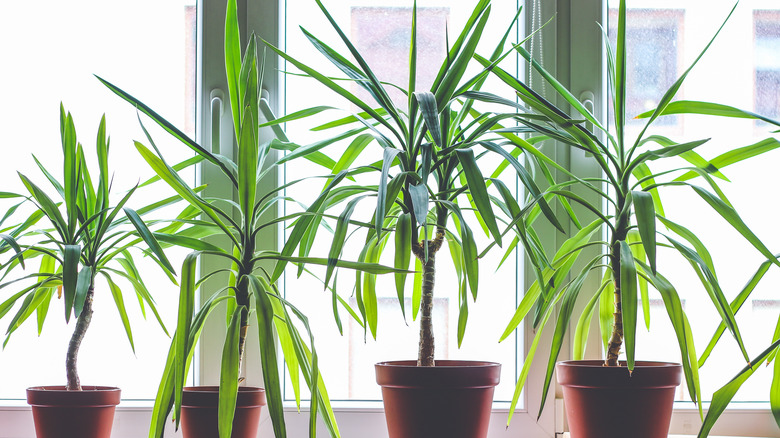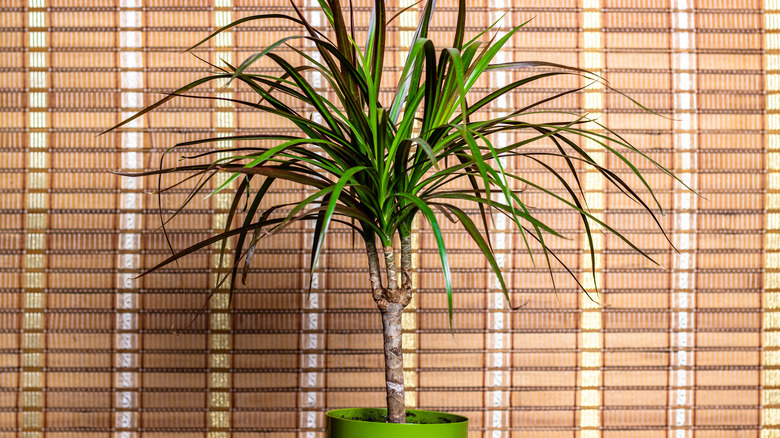Houseplants are more than living decor. While they certainly add color and natural beauty to a space, indoor plants also have health benefits for you and your family. A 2024 review published in the International Journal of Environmental Research and Public Health found that indoor plants improve relaxation, blood pressure, air quality, and humidity. If you’re eager to enjoy the perks of a potted purifier, you need to consider the dragon tree (Dracaena draco). This popular indoor tree not only purifies air but also fights mold.
Household mold affects everyday health, complicates ailments like asthma, and is often hidden from sight. It spreads when spores intermingle with moisture on a surface. This moisture may be caused by humidity, an air conditioner, or through spills and leaks. According to the EPA, moisture control is the single best way to thwart mold before it becomes an issue. Placing a dragon tree in a humid room can reduce the airborne water particles. By drying out the space, the dragon tree minimizes the likelihood of mold growth.
Dragon trees are considered an air purifying plant

Air-purifying plants are ecological wonders studied for their benefits by NASA and other organizations since 1989. They take in harmful carbon dioxide and release oxygen during photosynthesis. This process, meant to provide sugar and energy for the plant, gives us cleaner air to breathe. Dragon trees are one of the best plants to help purify the air in your home. NASA’s study found similar plants in the Dracaena family remove benzene, formaldehyde, and trichloroethylene chemicals from the air.
Reducing these chemicals is better for you as they are considered hazardous. TCE is found in household and automotive cleaners, spray adhesives, and degreasers. Prolonged exposure to TCE is linked to kidney cancer. Benzene is used to make products like detergent, paint, furniture wax, and adhesive. Early exposure can result in symptoms like dizziness, confusion, and vomiting, while repetitive exposure may lead to leukemia and other forms of blood infection. Formaldehyde, which may be found in your flooring, is known to cause eye, nose, and throat irritation, as well as breathing problems for those with asthma.
A dragon tree can cut down on these unseen airborne chemicals. It will absorb what is harmful to us and, in turn, produce cleaner air. Though not the best solution for a room with heavy toxic exposure, a well-placed dragon plant will improve air quality.
They reduce the humidity necessary for mold

Excessive water vapor in the air leads to humidity. Humid rooms are a breeding ground for mold, which thrives in moist conditions. Mold exposure symptoms range from coughing and sneezing to infection. Reducing the relative humidity of a room is critical to preventing mold growth. Arguably one of the best indoor plants, a dragon tree can thrive in humid conditions and improve them for you.
A dragon tree endures long periods of drought, so it has adapted to taking moisture from the air. The leaves absorb tiny airborne water particles and transport them down the stems into the trunk and ultimately down to the roots. A dragon tree can grow in a humid room and impact the conditions necessary for mold growth. Because the leaves absorb water vapor that would otherwise hang in the air, a dragon tree decreases the likelihood of mold spores. Less water vapor means lower humidity and a drier room.